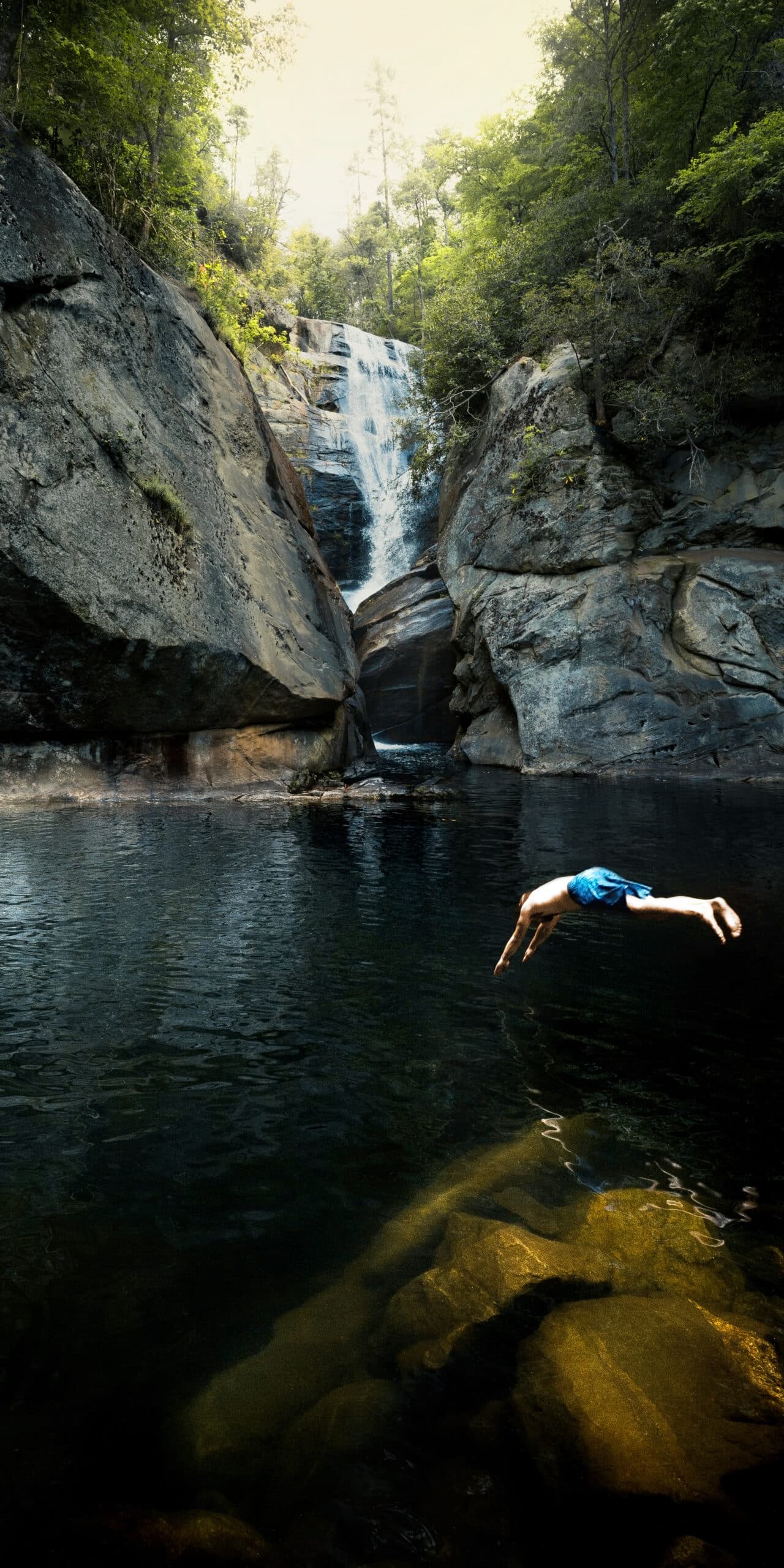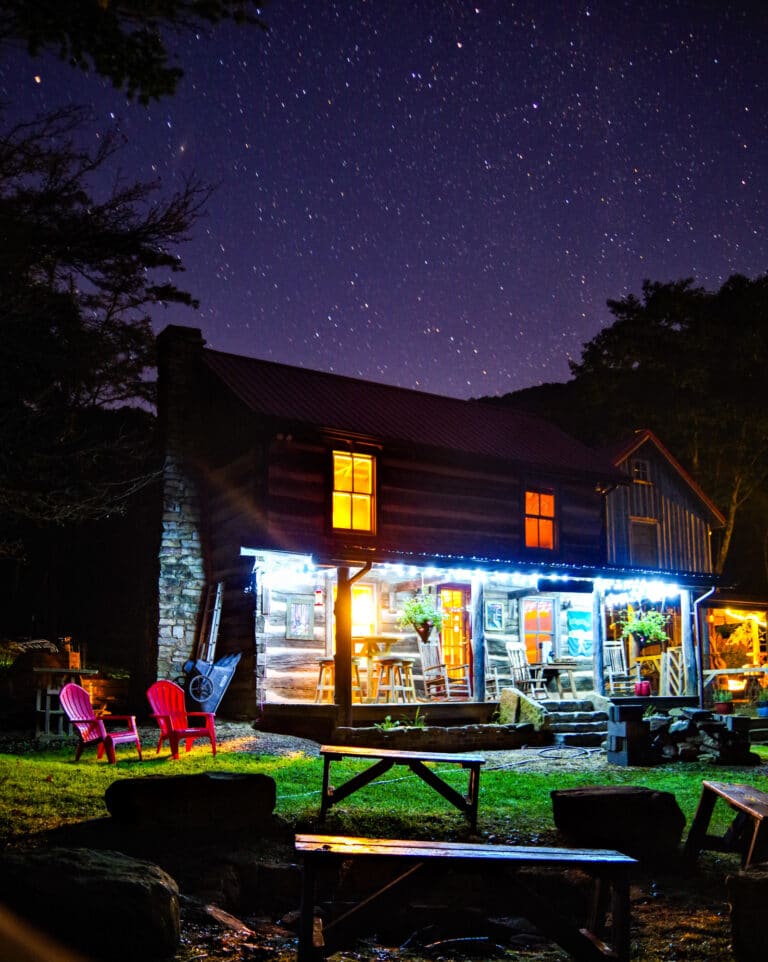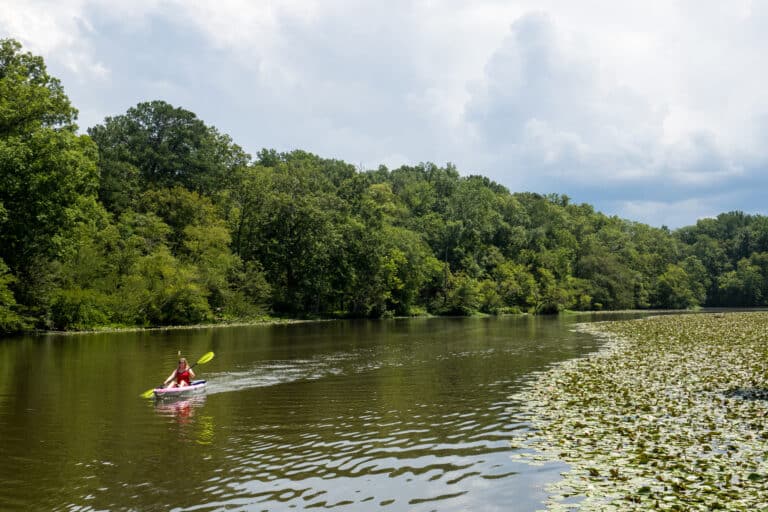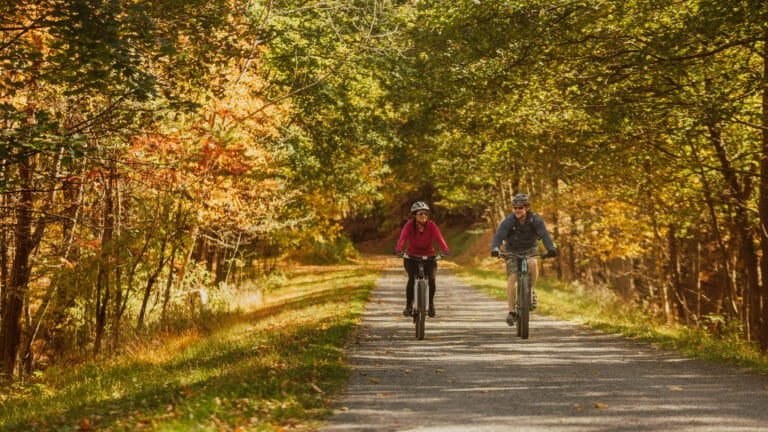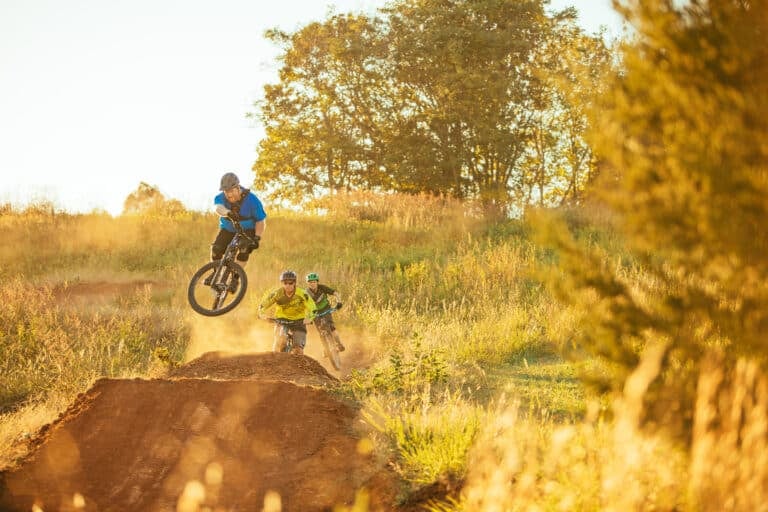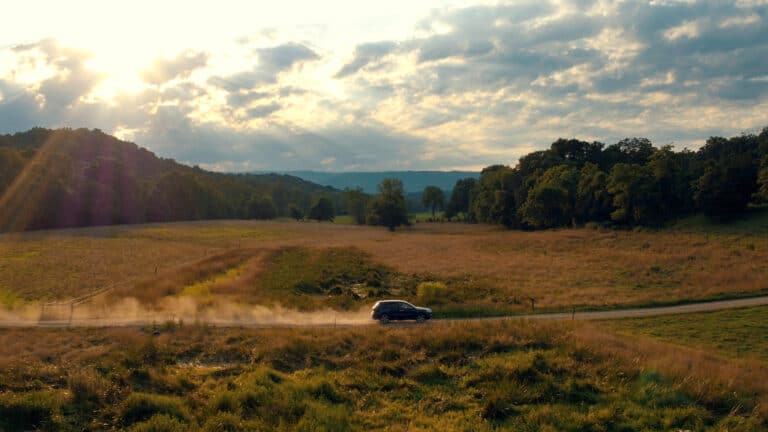4 Must-Visit Waterfalls in the Blue Ridge (Plus, 4 Safety Tips for Your Next Adventure)
From roaring giants to mossy trickles, the Blue Ridge is packed with waterfalls worth the hike (and the mosquito bites). Just in time for summer, we’ve rounded up four unforgettable cascades—plus expert tips to keep your adventure smart and safe.
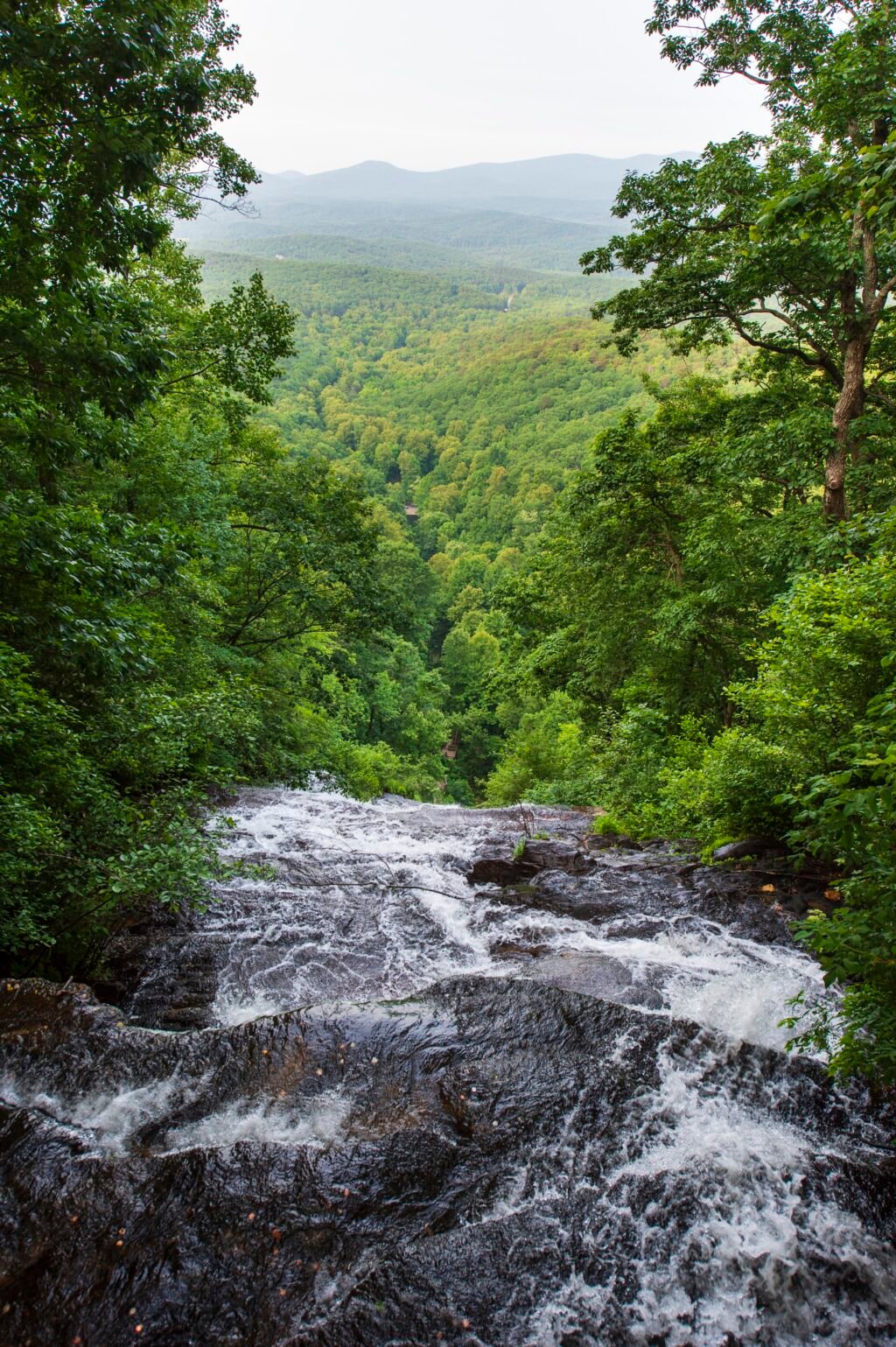

Amicalola Falls in Dawsonville, Georgia
At a whopping 729 feet, Amicalola Falls isn’t the least bit bashful. In fact, this cascade has earned quite a few superlatives over the years: tallest waterfall in Georgia, the third-highest east of the Mississippi, and hands-down the most Instagrammable in the Peach State.
Located in Amicalola Falls State Park near Dawsonville, this natural wonder is a stone’s throw from the southern terminus of the Appalachian Trail. To admire the cascade up close and personal, you can either take a short, scenic drive to the top or climb a 600-step staircase. Either way, bring your camera.
After your waterfall pilgrimage, recharge at The Blue Bicycle, a chef-owned and operated bistro in downtown Dawsonville. Order the North Carolina mountain trout with lemon and herb compound butter, wash it down with a whiskey, and then retire to Amicalola Falls Lodge.
Paradise Falls in Tuckaseegee, North Carolina
If you’re willing to work for your waterfall, Paradise Falls is hiring.
Hidden deep in North Carolina’s Nantahala National Forest, this 100-foot waterfall marks the spot where Wolf Creek dives headfirst into a mossy slot canyon like it’s got something to prove.
While the hike to the base of the falls is only about half a mile, it packs a punch with gnarly roots, slick stream crossings, and a few steep scrambles aided by ropes. For your troubles, you’ll be rewarded with a jaw-dropping swimming hole that’s great for mid-summer dips.
Once you’ve wrung the wild out of your system, head to nearby Cashiers for a well-earned refuel. Grab a smash burger and local IPA at Whiteside Brewing Company and finish the day with a scoop at Crossroads Custard.

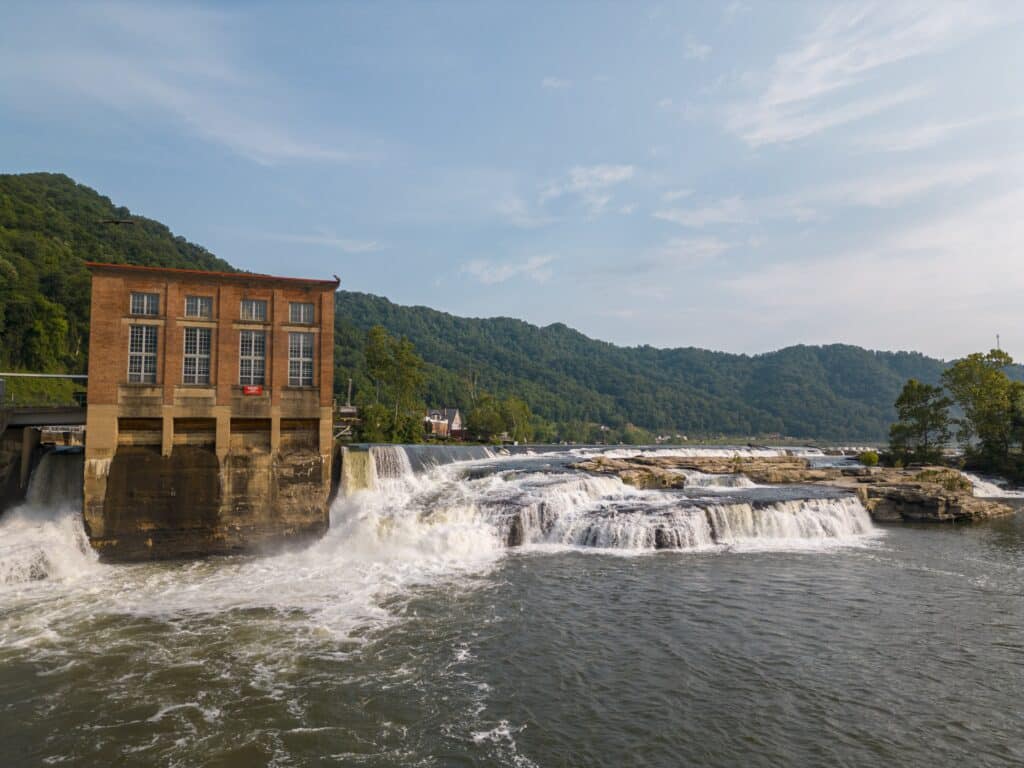
Kanawha Falls in Gauley Bridge, West Virginia
If you’re looking for some waterfall wow factor without the uphill slog, Kanawha Falls is the perfect pit stop.
Fed by the eponymous Kanawha River in Gauley Bridge, W.Va., this Mountain State stunner tumbles wide and wild over a 15-foot-tall sandstone ledge. To access the cascade, hop off scenic Route 60 at the historic hydroelectric plant (constructed in the late 1800s). From there, a short, flat walkway leads straight to the falls.
After soaking up the views, launch a kayak from the public boat ramp and spend the day angling for smallmouth bass, flathead catfish, or freshwater drum. Finish with a downhome dinner at The Glen Ferris Inn. (Local tip: Order the blackberry cobbler for dessert.)
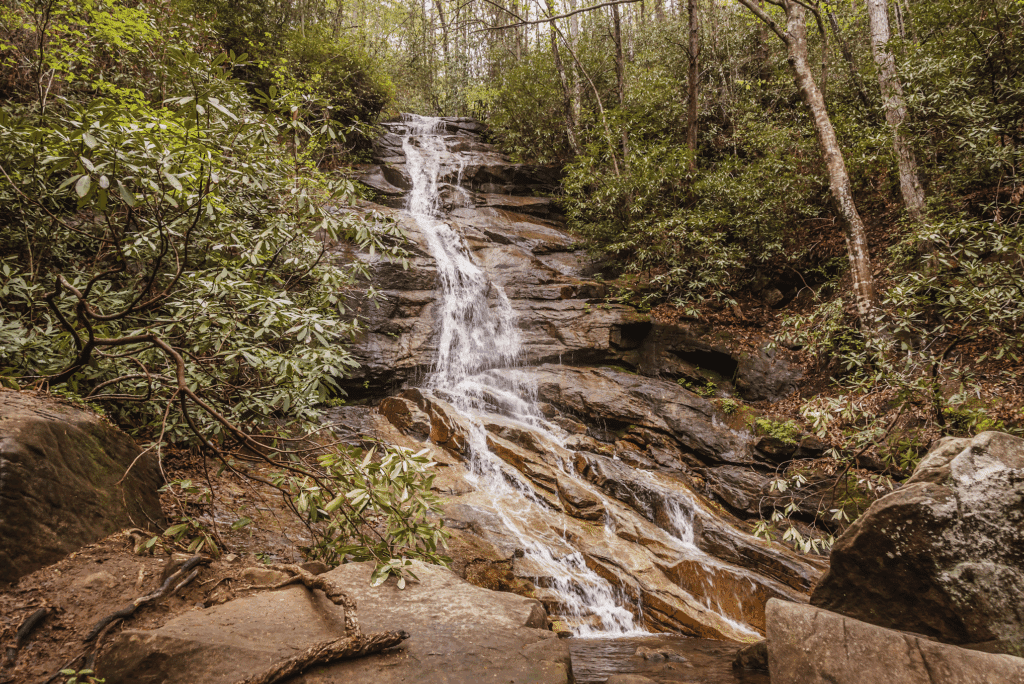
Jones Gap Falls in Cleveland, South Carolina
Jones Gap Falls isn’t the tallest or most thunderous cascade on this list. But it just might be the most serene.
Tucked along the Middle Saluda River in Upstate South Carolina, this 50-foot waterfall is accessible via a moderate, three-mile out-and-back trail. The path winds through dense rhododendron thickets, crosses the river several times, and offers glimpses of rugged cliffs before arriving at a short spur trail that leads to the falls.
Upon arrival, you’ll find a steady stream tumbling over an impressive granite face. While there’s no plunge-worthy swimming hole, it’s a good spot to read a few pages and eat a granola bar before trekking back to the parking lot.
If you’re headed south on your way home, bookend your adventures with a PBCB (peanut butter chocolate banana) smoothie at Swamp Rabbit Cafe and Grocery in Greenville. If you’re headed north, grab a roast beef and cheddar toastie at Cedar Mountain Outpost in Brevard, N.C.

Don’t Slip Up: Waterfall Safety Tips from Experts
With slick rocks and steep drops, waterfalls demand respect. Here’s what the experts want you to know before you go.
1. Keep a Safe Distance
Sure, the view from above a towering waterfall might make for an epic photo. But no selfie is worth your life.
“Do not walk in a creek right above a waterfall unless safely roped in,” warns Joe Moerschbaecher of Pura Vida Adventures, an outdoor guide company based in Brevard, N.C. “The combination of cliffs, water, and wet rocks can create an extremely unforgiving and dangerous environment to the unaware or overconfident.”

2. Respect the Slickness
The rocks below a cascade can be treacherous, too.
“In our region, fungi and mold grow in these wet environments, creating slippery conditions, often akin to skating on ice,” says Vesna Plakanis of A Walk in the Woods, a naturalist guide in the Great Smoky Mountains of Tennessee. “Sadly, these slippery conditions contribute to injuries and fatalities each year.”
Protect yourself by wearing shoes with nonslip soles. (Sandals and flip-flops won’t cut it.) You may also consider bringing trekking poles for extra stability.
3. Prepare for a Challenge
There’s no denying the allure of a waterfall—the mist on your face, the roar in your ears, the cooling water on your feet. But getting there isn’t always easy.
“The [hike] might be two miles one way,” says Plakanis, “but mountain miles are very different from city miles.”
That said, know your limits. Only take on trails that match your fitness level, give yourself plenty of daylight for the trip, and bring the essentials (think water, snacks, layers, and rain gear).

4. Know Your Route
Not all waterfall trails are well-marked, and a missed turn can quickly devolve into a dangerous detour.
“Plan ahead,” says Moerschbaecher. “Make sure you know the trail and how to safely navigate the trail to the base of the waterfall.”
Before you venture into the forest, research your route and download a map to your phone (better yet, bring a paper one). Pay attention to signage and stick to established trails, both for your safety and to prevent damaging fragile ecosystems.
Cover photo: Expect ropes, scrambles, and stream crossings on the way to Paradise Falls. Photo courtesy of VisitNC.com
